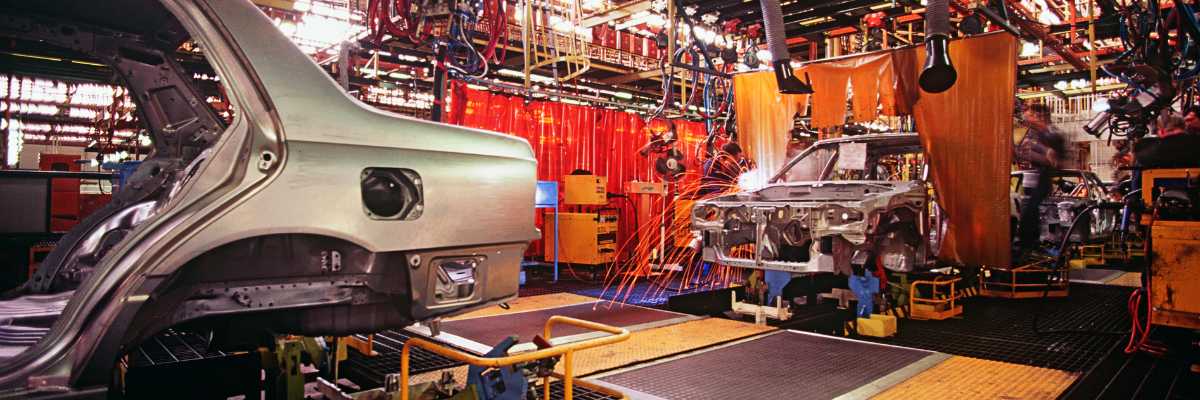What are the Best Design Courses for Automobile Engineers to Learn in 2026?

Automobile engineers are professionals who design, develop, and produce vehicles such as automobiles, trucks, buses, motorbikes, and other vehicles. These engineers work on many elements of automotive manufacturing, such as R&D, design, testing, and production. They ensure that automobiles are safe, reliable, and efficient and that regulatory standards are followed.
Automobile engineers apply engineering principles, mechanics, and materials science knowledge to develop new solutions and improve vehicle design and performance. The world of automobile engineering is always growing, and with the emergence of electric vehicles and the development of new technologies, there is a growing demand for engineers who can create innovative and sustainable automobiles.
To become an automobile engineer, you need to understand the design concepts that underpin modern automobiles. Automobile design is essential to the sector, including the vehicle's visual appeal, performance, and safety aspects. As a result, an automobile engineer must have a deep understanding of design ideas and methodologies. This blog looks into the best design courses for automobile engineers to learn in 2026.
Eligibility for Automobile Design Course in Indian Colleges:
In India, to pursue an automobile design course, there are certain eligibilities to study. As follows are some of the most common automobile designing courses eligibility for undergraduate and postgraduate Automobile Design courses, which a student must remember while enrolling:
• The student should have passed their higher secondary education with the minimum qualification of 50% in Physics and Mathematics and any one subject out of Chemistry or Biology or Biotechnology or Computer and also required to appear for entrance exams and possess a basic knowledge of relevant software. These are the Eligibility Criteria for Undergraduate Courses.
• The Automobile Design Course Eligibility for a postgraduate degree is a student should have completed his undergraduate degree in a relevant field like automobile engineering or product design with a minimum of 45 – 50% marks and should have to go through entrance exams like GATE.
Courses offered in Indian Colleges for Automobile Design:
The introduction of electric and hybrid vehicles has increased the demand for qualified people in the field of automobile design. Many Indian colleges have identified this need and have started to offer vehicle design courses. We will look at some of the popular automobile design degrees given by Indian colleges:
Undergraduate Courses:
1. Bachelor of Technology (Automotive Design Engineering),
2. Bachelor in Industrial Design,
3. Bachelor in Transportation Design.
Postgraduate Courses:
1. Master’s Degree in Transportation Design,
2. Master in Automotive Engineering,
3. Master in Car Design.
Design Courses for Automobile Engineers after Graduation:
In this article, we will look into the available design courses for automobile engineers and how they may help establish a career in this interesting field.
1. CAD/CAM:
CAD/CAM is an abbreviation that stands for Computer-Aided Design and Computer-Aided Manufacturing. It is a software system that allows engineers to use computer technology to design and build parts and products. Automotive components such as engines, transmissions, and suspension systems are designed using CAD/CAM. This course teaches students how to construct and modify 3D models, run simulations, and generate production instructions. Because technology allows engineers to design parts and products more rapidly and effectively, CAD/CAM has become an important tool in the automotive industry. If you’re looking for Unigraphics NX Training in Chennai, consider Cadd Centre Vadapalani.
2. AutoCAD:
AutoCAD is a computer-aided design(CAD) program frequently used in the automotive design field. Designers can use it to make 2D and 3D models of automobile components, parts, and assemblies.

AutoCAD is used in automotive design for a variety of tasks such as creating body panels, engine parts, suspension systems, and interior components. It is also employed in the creation of assembly drawings, production drawings, and documentation. AutoCAD design course is used in automotive design to create body panels, engine parts, suspension systems, and interior components, among other things. It's also used to make assembly, manufacturing, and documentation drawings.
3. Automotive Design:
The Automotive Design Course is a broad subject that covers all areas of automobile design, from concept to final product. The artistic and technical components of automobile design are covered in this course, which includes sketching, clay modelling, digital modelling, and prototyping. This Automotive Design Course will teach students how to create a design brief, undertake research and analysis, and translate their ideas into real prototypes. This course is required for anyone wishing to work as an automobile designer or engineer.
Automotive design has grown rapidly over these years with technological advancement, and software courses becomes an essential component in the automotive design process. It’s important to understand the courses relevant to automobile design if you are looking to pursue a career.
• Autodesk 3Ds Max:
Autodesk 3Ds Max is a popular 3D modelling, animation, and rendering software used in various industries, including car design. From building complex 3D models to visualizing and rendering designs, 3D Max offers a variety of tools and capabilities that make it an outstanding choice for automobile designers.

3Ds Max is used in automotive design to create 3D models of automobiles such as cars, trucks, motorcycles, and other sorts of vehicles. Cadd Centre Vadapalani is a great choice to enhance your automotive design career by learning Autodesk 3ds max training.
• SolidWorks:
SolidWorks is a strong Computer-Aided Design (CAD) application that is frequently used in the automobile industry. The software was created primarily for mechanical engineering and product design, it is a popular choice among automotive designers. SolidWorks Automobile design has several features that make it a great tool for vehicle design. It has functions such as 3D modelling, collaboration, and design validation.
• CATIA:
CATIA is a powerful automotive design software application that helps engineers and designers to build 3D models of automobile components, assemblies, and systems. It is a Computer-Aided Design (CAD) suite that allows designers to generate and manipulate 3D designs of automobile components and systems such as engines, transmissions, chassis, and bodywork.
In Automobile Design, CATIA is used to develop 3D models of components, evaluate their performance, and simulate how they will function in the finalized vehicle. It is also used to create complete technical drawings and specifications for manufacturing, as well as for design analysis, engineering calculations, and design optimization. If you are looking to pursue CATIA Course in Chennai, Cadd Centre Vadapalani is offering one of the best software courses in Chennai.
4. Vehicle Dynamics:
The vehicle dynamics course is the study of how motor vehicles move and react to various driving circumstances. This course covers suspension design, handling, and stability, as well as the effects of vehicle weight and aerodynamics on performance. Students in this course will learn how to improve automobile handling and stability as well as maximize vehicle performance. This vehicle dynamics course is required for anyone wishing to work as a vehicle dynamics engineer or race car engineer.
5. Automotive Electrical Systems:
Modern automobiles are outfitted with a wide range of electrical systems, ranging from simple lighting to complicated control systems. The essentials of vehicle electrical systems, including wiring, circuits, and sensors, are covered in this course. This course will teach students how to diagnose and fix electrical faults, design electrical systems for automobiles, and integrate emerging technologies such as electric powertrains and autonomous driving systems. This course is required for anyone wishing to work as an electrical engineer or control systems engineer.
6. Automotive Materials:
The materials used in vehicle design significantly affect vehicle performance, durability, and sustainability. This course will teach you about the qualities and features of several materials utilized in vehicle design, such as metals, polymers, and composites. This course will teach students how to choose materials based on their qualities and how to maximize the use of materials for vehicle design. This course is required for anyone interested in becoming a materials or sustainability engineer.
7. Automotive Manufacturing:
The process of transforming raw materials into finished vehicles is known as automotive manufacturing. This course covers the whole manufacturing process, from production line design to final product assembly. This automotive manufacturing course will teach students how to improve manufacturing processes, ensure quality control, and increase production efficiency. This course is required for anyone wishing to work as a manufacturing or production engineer.

8. Automotive Powertrains:
The powertrain is the system that transforms gasoline or electricity into the energy needed for driving a vehicle. The principles and methods of powertrain design, including engines, transmissions, and drivetrains, are covered in this course. This course will teach students how to enhance powertrain efficiency as well as how to integrate new technologies such as hybrid and electric powertrains. This training is required for anyone wishing to work as a powertrain or alternative energy engineer.
Job Opportunities after learning Automobile Engineering Design Courses:
There are plenty of Job opportunities once you complete your automobile design course. The following are the job opportunities for Automobile Engineering Design Course:
1. Automobile Engineer
2. Automotive Design Engineer
3. Automotive Engineer
4. Product Development Engineer
5. Vehicle Testing Engineer
6. Manufacturing Engineer
Conclusion:
Automobile engineering is a field that is always evolving and expanding, and there are plenty of available design courses for automobile engineers wishing to advance their skills and expertise. There is a course to suit the needs and interests of every automobile engineer, ranging from foundational courses on automotive design principles to more specialized courses on materials, aerodynamics, and propulsion systems. Engineers may continue to develop and improve the design and functioning of vehicles by remaining up to date with the newest design trends and technology, assuring a bright future for the automotive industry.


